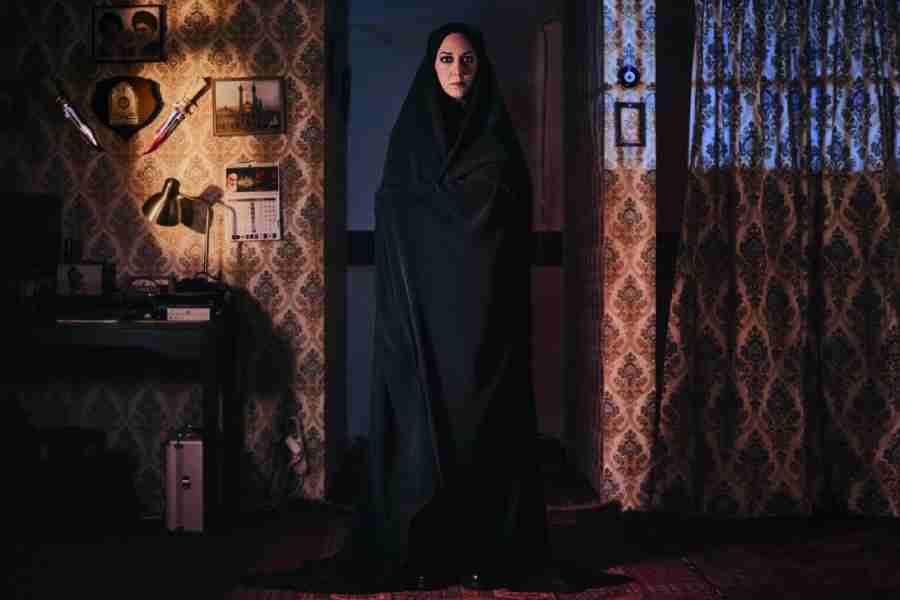Art is the defining principle behind architecture and its organising precepts. Yet, there is also a dichotomy between art and architecture: art seeks freedom and can be chaotic in its limitless potential, while architecture is limited in its scope and bound by the strictures of physics and geography. The lines between art and architecture were blown apart with the power of imagination in Splinter Puncture Sliver Spall (a recent exhibition at TRI Art & Culture co-presented by Nature Morte and curated by Phalguni Guliani). Six contemporary artists used the stark ‘white cube’ of the gallery space and its silence and stillness to present split moments where architecture surrenders to the chaos of art and nature.
Asim Waqif creates cyanotype photograms on galvanised steel to conjure up crumpled sheets that look like discarded blueprints (picture, right). What architectural spaces and cyanotypes have in common is the importance of light — both are transformed by the light that falls on them. The lines imprinted by light on these steel sheets are kinked and contorted owing to the folding of the sheets. The original blueprint that was formed on them is likewise bent into something completely new just as a built space can look very different on the basis of the light that falls on it. As with misshapen origami objects, one can just about discern what they were perhaps intended to be.
While Waqif dissects the moment of creation, Martand Khosla’s stunning installations manage to find beauty and symmetry in the moment of destruction (picture, left). Imagine the moment a bomb hits an expanse of lived architectural spaces and detonates — this is rather easy to do these days given the pictures emerging from war zones like Gaza and Ukraine. What if time was frozen in the seconds just after detonation when the debris has been blown into the air by the bomb but is yet to be thrown to the ground? These moments where lives and lived spaces — singed window panes, doors, tables, chairs, trunks, bed frames, shelves — hang in suspended animation can be disturbing but also visually arresting; the silence that cloaks these sculptures is like the lull before the storm. One can imagine the moment time is unfrozen, the reality of lives destroyed into smithereens will be rendered with screams and wails.
Vibha Khosla balanced huge hunks of stone on top of thin stands with hives woven out of thousands of ghungroos hanging from the underside of these rocks, almost mimicking the shapes of the boulders atop. Each ghungroo is like a tiny compartment or house. Like hives that have been abandoned by the colonies of bees that built them or like desolate human villages, these structures are silent. Yet the slightest change, a passing breeze or a slight knock, would perhaps set the ghungroos off and leave the hives abuzz. The rocks, on the other hand, are solid and seemingly impervious to change. The rocks on top are thus the focal point à la Derrida and the ghungroo hives underneath the ‘différance’ within.
Jitish Kallat, too, tries his hands at deconstruction, blurring the intersections of science, philosophy, history and mathematics. He slices open the Earth and its various geographies and tries to plot them on a graph of sorts. Even though each aspect of the globe has a dedicated scientific discipline, its shapes and forms defy the certainties that one expects from science. Like art, nature refuses to conform or be contained.
Parul Gupta plays with the parallax effect — whereby the position or the direction of an object appears to differ when viewed from different positions — creating spaces that morph even as one walks through them. She creates this illusion of a three-dimensional physical space by drawing two-dimensional tangram shapes on a large wall, interconnecting them with threads and lines. The addition of two thin metal frames in the shape of Mughal columns that reflect shadows on the wall owing to cleverly placed lights mimics the feeling of walking through a many-pillared hall like the Diwan-i-Am.
Ayesha Singh abjures the conceptual for the figurative. Her vivid imagination conjures up futuristic buildings that are built on the basis of the best practices of past architectural wonders. They may seem like a puzzle pieced together from disparate jigsaw pieces — a bit of a Mughal dome here, a bit of a Rashtrakuta temple there — but they come together seamlessly to form stunning architectural designs.











